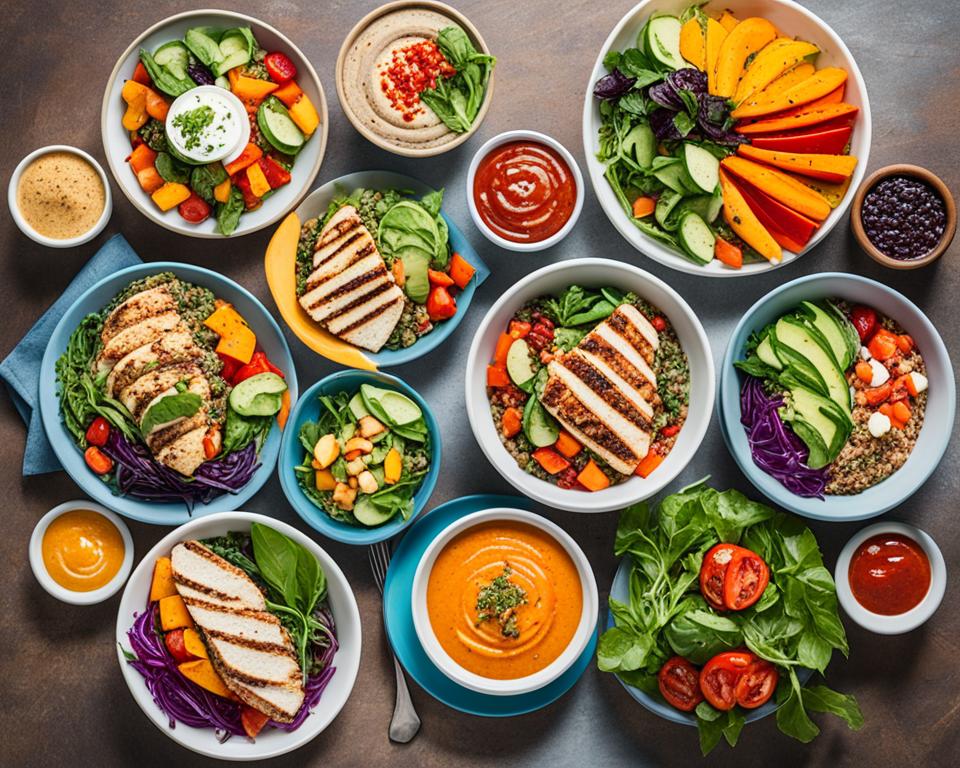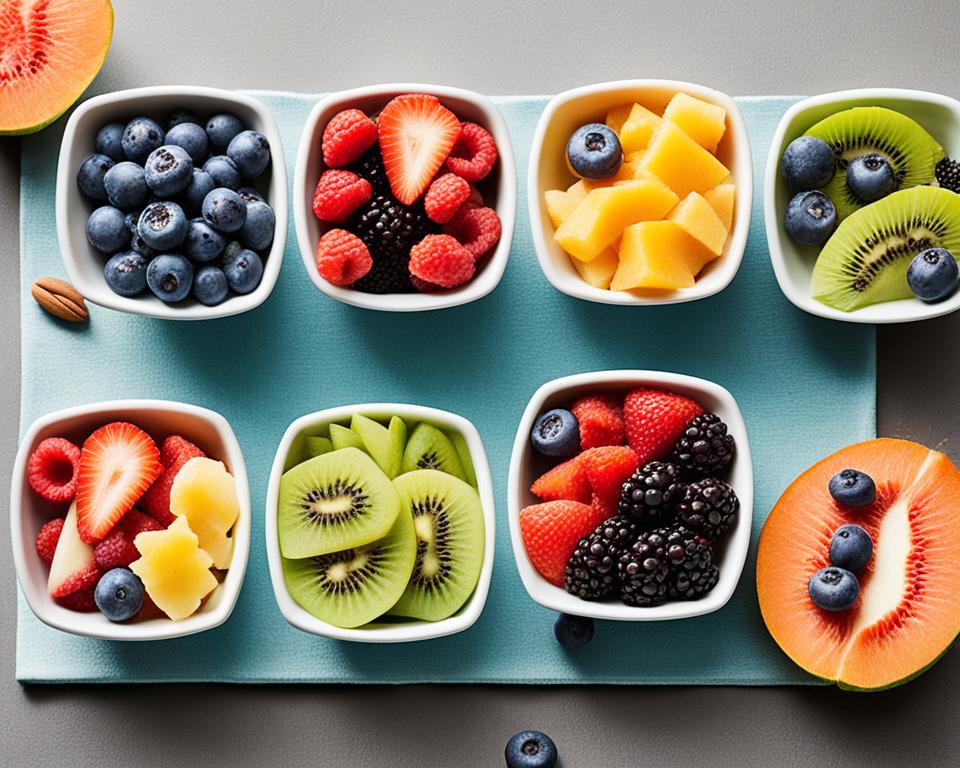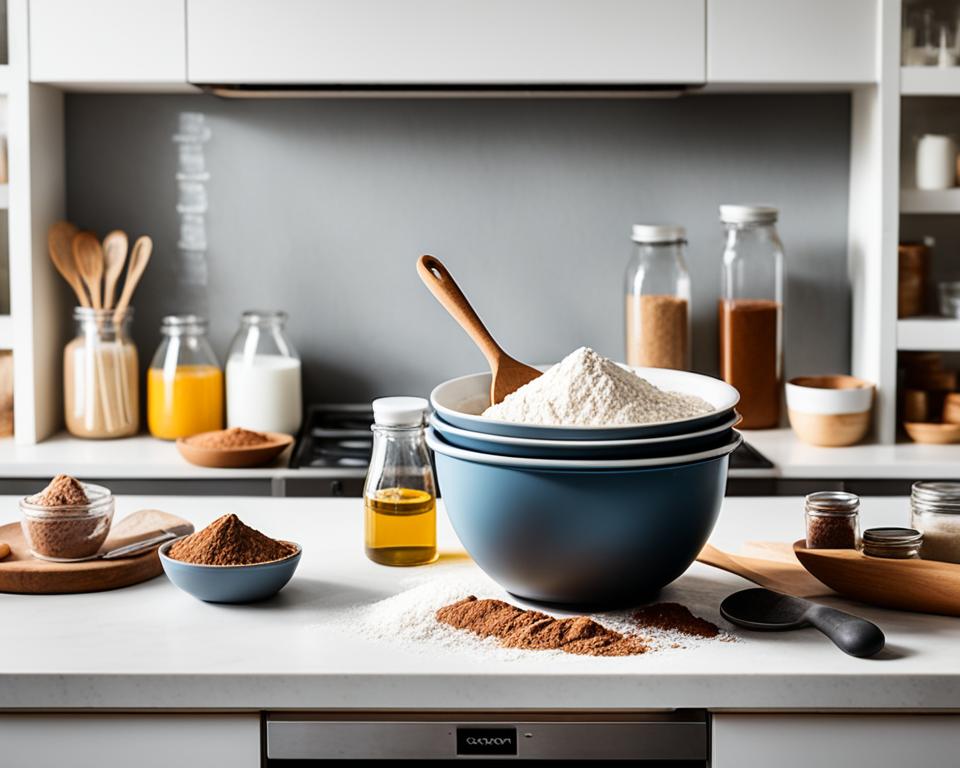Welcome to our comprehensive guide on sugar-free cooking for weight loss! Are you looking to shed those extra pounds without compromising on taste? Look no further. In this article, we will explore the benefits of sugar-free cooking and provide you with a guide on how to cook delicious and healthy sugar-free recipes that can help you lose weight effectively. Say goodbye to high-calorie meals and embrace a sugar-free diet for a healthier lifestyle.
It’s no secret that excessive sugar consumption can hinder weight loss progress. By eliminating added sugars from your diet, you can significantly reduce calorie intake and lower the risk of developing conditions like obesity and diabetes. Moreover, a sugar-free diet can improve energy levels, reduce cravings, and promote overall well-being. With our tips and tricks for sugar-free cooking, you can create mouthwatering dishes while achieving your weight loss goals.
To kickstart your sugar-free cooking journey, we will guide you through planning sugar-free meals for breakfast, lunch, and dinner. We will also provide you with delightful and healthy sugar-free snack ideas to keep your cravings at bay. Additionally, we will share a sample no-sugar meal plan that takes into account your calorie needs and ensures a balanced diet.
Key Takeaways:
- Reduce calorie intake and lower the risk of obesity and diabetes by going sugar-free.
- A sugar-free diet can improve energy levels, reduce cravings, and promote overall well-being.
- Eliminate added sugars and focus on natural sources of sweetness in your cooking.
- Plan your meals ahead of time to ensure a balanced and nutritious diet.
- Enjoy a variety of sugar-free breakfast, lunch, dinner, and snack options to support your weight loss journey.
Why Go Sugar-Free?
Going sugar-free can have numerous benefits for your health, particularly when it comes to weight loss. By eliminating added sugars from your diet, you can reduce your calorie intake and lower the risk of developing conditions such as obesity and diabetes. But weight loss is just the tip of the iceberg—adopting a sugar-free diet can also improve your energy levels, help reduce cravings, and promote overall well-being. When it comes to cooking sugar-free, it’s important to use the right tips and substitutions to create delicious and nutritious meals without sacrificing taste.
The Impact of Sugar on Weight Loss
Sugar consumption can have a significant impact on weight loss efforts. Consuming excessive amounts of added sugars can lead to weight gain and hinder progress towards achieving your weight loss goals. Fortunately, by incorporating sugar-free desserts into your diet and utilizing sugar-free cooking techniques and ingredients, you can reduce your sugar intake and support your weight loss journey.
When it comes to cooking sugar-free desserts, it’s all about finding alternative ingredients and techniques that provide sweetness without the need for added sugars. By using natural sources of sweetness, such as fruits and vegetables, you can satisfy your sweet tooth without any guilt. You can create delicious desserts using fresh fruits, unsweetened cocoa powder, and natural sweeteners like honey or stevia.
“By using natural sources of sweetness, such as fruits and vegetables, you can satisfy your sweet tooth without any guilt.”
Moreover, sugar-free cooking techniques involve avoiding processed and packaged foods that often contain high amounts of added sugars. By focusing on whole, unprocessed ingredients and using cooking methods like roasting, grilling, or steaming, you can enhance flavors without relying on sugar. This way, you can enjoy savory meals that support your weight loss goals.
Reducing your sugar intake through sugar-free desserts and cooking techniques can have a positive impact on your weight loss journey. By making these simple changes, you can enjoy delicious and satisfying meals without the need for added sugars. Let’s take a look at a table that compares the sugar content in common sweeteners and their sugar-free alternatives:
| Sweetener | Sugar Content (per teaspoon) | Sugar-Free Alternative |
|---|---|---|
| White Sugar | 4 grams | Stevia |
| Brown Sugar | 4 grams | Applesauce |
| Honey | 5.6 grams | Agave nectar |
| Maple Syrup | 13 grams | Vanilla extract |
Tips for Cooking Sugar-Free Desserts:
- Use ripe fruits as a natural sweetener.
- Experiment with sugar alternatives such as stevia, monk fruit, or erythritol.
- Try baking with unsweetened applesauce or mashed bananas to add natural sweetness.
- Explore recipes that use spices like cinnamon, nutmeg, or cardamom to enhance flavor.
By incorporating these sugar-free cooking techniques and ingredients into your meals, you can create flavorful and satisfying dishes that contribute to your weight loss goals. Stay committed to reducing your sugar intake and explore the world of sugar-free cooking for healthy and delicious eating.
Planning Sugar-Free Meals
Planning your meals is vital when it comes to cooking sugar-free for weight loss. By creating a sugar-free meal plan, you can ensure that you are consuming balanced and nutritious meals throughout the week. Sugar-free meal planning involves selecting a variety of nutrient-rich foods that are low in added sugars and high in fiber and protein. This ensures that you stay full and satisfied while still promoting weight loss.
When planning your sugar-free meals, focus on incorporating a variety of fruits, vegetables, whole grains, lean proteins, and healthy fats. These food groups provide essential nutrients and energy without the added sugars that can impede your weight loss progress. Aim for a colorful plate that is rich in vitamins, minerals, and antioxidants.
To assist you in planning your sugar-free meals, consider the following tips:
- Make a Weekly Meal Schedule: Plan out your meals for the week, including breakfast, lunch, dinner, and snacks. This will help you stay organized and ensure that you have all the necessary ingredients on hand.
- Choose Sugar-Free Recipes: Look for sugar-free recipes that align with your dietary preferences and weight loss goals. There are many online resources and cookbooks available that offer delicious and healthy sugar-free meal ideas.
- Include a Variety of Foods: Incorporate a diverse range of fruits, vegetables, whole grains, lean proteins, and healthy fats into your meal plan. This will not only provide you with a wide array of nutrients but also keep your taste buds satisfied.
- Prep and Cook in Advance: Take advantage of your free time by prepping and cooking meals in advance. This will save you time during busy weekdays and ensure that you have nutritious sugar-free meals readily available.
- Monitor Portion Sizes: Even when following a sugar-free meal plan, portion control is still important for weight loss. Be mindful of serving sizes and listen to your body’s hunger and fullness cues.
By implementing these strategies and creating a well-rounded sugar-free meal plan, you can enjoy delicious and nutritious meals while promoting weight loss. Stay committed to your goals and explore new flavors and recipes to keep your meals exciting and satisfying.
Here is an example of a day’s worth of sugar-free meals:
| Meal | Recipe |
|---|---|
| Breakfast | Spinach and Mushroom Omelette with Avocado |
| Lunch | Grilled Chicken Salad with Mixed Greens, Tomatoes, Cucumbers, and Balsamic Vinaigrette |
| Afternoon Snack | Celery Sticks with Almond Butter |
| Dinner | Baked Salmon with Roasted Brussels Sprouts and Quinoa |
| Evening Snack | Greek Yogurt with Berries and Chia Seeds |
Remember, a successful sugar-free meal plan is not just about what you eat but also about cultivating a positive relationship with food. Enjoy the process of planning, preparing, and savoring your meals. By embracing sugar-free cooking and meal planning, you can achieve your weight loss goals while nourishing your body with wholesome, delicious food.
Sugar-Free Breakfast Ideas
Breakfast is an important meal when it comes to weight loss, and there are plenty of sugar-free options to choose from. Start your day with sugar-free breakfast recipes that are packed with nutrients and flavor. From egg muffins with vegetables to chia pudding with fresh berries, there are many delicious and healthy sugar-free breakfast options that can help you kickstart your day.
These sugar-free breakfast recipes provide a balanced combination of protein, fiber, and healthy fats to keep you energized throughout the day. Whether you prefer savory or sweet breakfasts, there’s something for everyone to enjoy.
Sugar-Free Breakfast Options
Here are some healthy sugar-free breakfast options to inspire your morning routine:
| Recipe | Description |
|---|---|
| Egg Muffins with Vegetables | A protein-packed breakfast option that can be customized with your favorite vegetables. Simply whisk eggs with diced vegetables, pour into muffin tins, and bake until fluffy and golden. |
| Chia Pudding with Fresh Berries | A creamy and nutritious breakfast that can be prepared the night before. Mix chia seeds with your choice of milk and let it sit overnight to thicken. Top it off with fresh berries for added antioxidants. |
| Avocado Toast with Poached Eggs | A satisfying and filling option that combines creamy avocado spread on whole-grain toast with perfectly poached eggs on top. Sprinkle with salt and pepper for added flavor. |
| Fruit and Yogurt Parfait | A refreshing and sweet breakfast option that layers Greek yogurt, fresh seasonal fruits, and a sprinkle of nuts or granola for added crunch. |
Benefits of Sugar-Free Breakfasts
Choosing sugar-free breakfasts has numerous benefits for your health and weight loss journey. By skipping sugary cereals, pastries, and sweetened beverages, you avoid the energy crashes and cravings that high-sugar foods can cause.
Sugar-free breakfasts help stabilize blood sugar levels, maintain energy levels, and prevent overeating throughout the day. They provide a steady source of nutrients to fuel your body and promote healthy metabolism.
“Starting the day with a healthy and sugar-free breakfast sets the tone for eating well throughout the rest of the day. It fuels your body and mind, helping you stay focused, energized, and satisfied.”
By incorporating these sugar-free breakfast options into your daily routine, you’ll be well on your way to achieving your weight loss goals while enjoying delicious and nutritious meals.
Sugar-Free Lunch Ideas
When it comes to maintaining a sugar-free diet, lunchtime can be both nutritious and delicious. By incorporating wholesome ingredients and following sugar-free recipes, you can create meals that support your weight loss journey and keep you satisfied throughout the day. Whether you prefer salads, soups, or power bowls, there are plenty of healthy and flavorful options to choose from. Let’s explore some sugar-free lunch ideas that will nourish your body and tantalize your taste buds.
Salads with Lean Proteins and Fresh Vegetables
Opting for salads is a fantastic way to enjoy a sugar-free lunch. Choose nutrient-rich greens such as spinach, kale, or mixed lettuce as a base. Then, add grilled chicken, fish, or tofu as a lean protein source. To ramp up the flavor and nutritional value, top your salad with a variety of fresh vegetables, such as cherry tomatoes, cucumbers, bell peppers, and avocado. Finish it off with a simple vinaigrette made from olive oil, vinegar, and your favorite herbs and spices.
Sugar-Free Soups for a Nourishing Lunch
Soups are another excellent option for a sugar-free lunch. Whip up a homemade vegetable soup using a variety of colorful vegetables like carrots, broccoli, zucchini, and bell peppers. Flavor it with herbs and spices, such as thyme, rosemary, and turmeric, for added depth of flavor. You can also incorporate protein-rich ingredients like lentils or beans to make your soup more filling. Enjoy a warm and comforting bowl of soup that is both nourishing and satisfying.
Power Bowls Packed with Nutrient-Dense Foods
Power bowls are a popular choice for a sugar-free lunch as they are loaded with nutrient-dense ingredients. Start with a base of whole grains like quinoa or brown rice for sustained energy. Then, add a variety of vegetables, such as roasted sweet potatoes, steamed broccoli, and sautéed mushrooms. For protein, opt for grilled salmon, tofu, or chickpeas. Lastly, drizzle your power bowl with a homemade dressing made from olive oil, lemon juice, and Dijon mustard for a burst of flavor.
Recipes for Sugar-Free Lunch Options
Here are a few sugar-free lunch recipes to inspire you:
| Recipe | Description |
|---|---|
| Grilled Chicken Salad | A refreshing salad with grilled chicken, mixed greens, cherry tomatoes, cucumber, and a tangy lemon vinaigrette. |
| Vegetable Lentil Soup | A hearty and flavorful soup packed with vegetables, lentils, and aromatic spices like cumin and coriander. |
| Quinoa Power Bowl | A nourishing bowl featuring cooked quinoa, roasted sweet potatoes, sautéed kale, and baked tofu with a zesty tahini dressing. |
These recipes provide a great starting point for your sugar-free lunch creations. Feel free to customize them based on your preferences and add other ingredients that align with your dietary goals. Remember to prioritize whole foods and avoid processed ingredients that may contain hidden sugars. With these sugar-free lunch ideas, you can enjoy delicious and nutritious meals while staying on track with your weight loss journey.

Sugar-Free Dinner Ideas
When it comes to sugar-free dinner ideas, you don’t have to compromise on taste or satisfaction. By incorporating lean proteins, a variety of vegetables, and whole grains, you can create well-rounded meals that support your weight loss goals. Get creative in the kitchen and experiment with different flavors and cooking techniques to make your sugar-free dinners delicious and enjoyable.
Lean Proteins: Include lean proteins like chicken, fish, and turkey in your sugar-free dinner recipes. These proteins are low in fat and high in nutrients, making them a healthy choice for your weight loss journey.
Vegetables: Fill your plate with a colorful array of vegetables to ensure that you’re getting a good mix of vitamins, minerals, and fiber. Roasted vegetables, stir-fries, and grilled veggies are all great options for your sugar-free dinner meals.
Whole Grains: Opt for whole grain options like quinoa, brown rice, or whole wheat pasta to add fiber to your meals. These grains provide sustained energy and help you feel full and satisfied.
To give you some inspiration, here are a few sugar-free dinner recipes:
| Recipe | Description |
|---|---|
| Grilled Lemon Herb Chicken with Roasted Vegetables | A flavorful grilled chicken dish served with a side of roasted vegetables. The lemon herb marinade adds a tangy kick to the chicken, while the roasted vegetables provide a delicious crunch. |
| Asian Stir-Fry with Tofu and Vegetables | This colorful stir-fry combines tofu, crunchy vegetables, and a soy sauce-based sauce for a savory and satisfying meal. Serve it over brown rice or quinoa for added nutrition. |
| Salmon with Avocado Salsa and Quinoa | A juicy salmon fillet topped with a refreshing avocado salsa and served with a side of quinoa. This dish is packed with healthy fats, protein, and fiber, making it a perfect choice for a sugar-free dinner. |
Remember, these are just a few examples of the many sugar-free dinner options available. Don’t be afraid to modify recipes or experiment with new ingredients to suit your taste preferences. With a little creativity, you can enjoy delicious and healthy sugar-free dinners that support your weight loss journey.
Sugar-Free Snack Ideas
Snacking can be a challenge when following a sugar-free diet, but there are plenty of options available. Prepare sugar-free snack recipes ahead of time, such as energy balls made with dates and nuts, or enjoy fresh fruits and vegetables with a side of hummus or nut butter. These healthy sugar-free snacks can help curb cravings and keep you satisfied between meals without derailing your weight loss progress.
Here are some delicious sugar-free snack ideas to try:
- Energy Balls – These bite-sized treats are packed with natural sweetness from dates and nuts. Simply combine your favorite nuts, such as almonds or walnuts, with dates in a food processor. Roll the mixture into small balls, and refrigerate for a quick and satisfying snack.
- Fruit Skewers – Thread your favorite fruits, such as strawberries, pineapple, and grapes, onto skewers for a colorful and refreshing snack. Enjoy them on their own or pair them with a dollop of Greek yogurt for added protein.
- Veggie Sticks with Dip – Cut up a variety of crunchy vegetables like carrots, celery, and bell peppers, and serve them with a flavorful dip like hummus or a homemade yogurt dip. The combination of fresh veggies and creamy dip makes for a satisfying and nutritious snack.
- Nut Butter and Rice Cakes – Top rice cakes with a spread of your favorite nut butter, such as almond or peanut butter. This combination provides a balance of protein and healthy fats, making it a great option for a sugar-free snack.
- Greek Yogurt Parfait – Layer Greek yogurt with fresh berries and a sprinkle of unsweetened granola for a filling and satisfying snack. The Greek yogurt provides protein, while the berries add natural sweetness and antioxidants.

No Sugar Diet Meal Plan
Following a no sugar diet meal plan can be a powerful tool for those looking to lose weight. By eliminating added sugars from your diet, you can reduce calorie intake and improve overall health. A well-designed meal plan provides structure and guidance, ensuring that you are consuming balanced meals that promote weight loss without sacrificing flavor.
A no sugar meal plan focuses on incorporating a variety of delicious and nutritious foods while eliminating foods that contain added sugars. This includes sugary beverages, processed snacks, and desserts. Instead, the emphasis is on whole foods that are naturally sweetened or sugar-free.
To get started on a no sugar diet meal plan, consider the following guidelines:
- Choose foods that are low in natural sugars, such as leafy greens, non-starchy vegetables, lean proteins, and healthy fats.
- Incorporate complex carbohydrates that are high in fiber, such as whole grains, legumes, and sweet potatoes.
- Opt for unsweetened beverages, like water or herbal tea, instead of sugary drinks.
- Read food labels carefully to identify hidden sources of added sugars. Avoid products that list sugar, corn syrup, or other sweeteners as main ingredients.
With a well-structured no sugar meal plan, you can enjoy a wide variety of delicious and nutrient-dense meals for breakfast, lunch, and dinner. This allows you to satisfy your taste buds while still supporting your weight loss goals.
Sample No Sugar Diet Meal Plan
Here is a sample no sugar diet meal plan to get you started:
| Meal | Menu |
|---|---|
| Breakfast | Spinach and mushroom omelette with avocado |
| Snack | Handful of almonds and a piece of fruit |
| Lunch | Grilled chicken salad with mixed greens, cherry tomatoes, cucumbers, and balsamic vinaigrette |
| Snack | Vegetable sticks with hummus |
| Dinner | Baked salmon with roasted asparagus and quinoa |
| Snack | Greek yogurt with berries |
A no sugar diet meal plan provides structure and guidance for those looking to lose weight. By eliminating added sugars and focusing on whole, nutrient-dense foods, you can achieve sustainable weight loss while still enjoying delicious meals.
Remember, everyone’s nutritional needs are different, so it’s important to consult with a healthcare professional or a registered dietitian when making significant changes to your diet. They can help tailor a no sugar meal plan to suit your individual needs and provide ongoing support throughout your weight loss journey.
Benefits of a Sugar-Free Diet
Embracing a sugar-free diet comes with a range of benefits beyond weight loss. By reducing your sugar intake, you can improve your overall health and well-being. A sugar-free diet can help stabilize blood sugar levels, reduce inflammation, boost energy, and support heart health. It also encourages the consumption of nutrient-rich foods, such as fruits, vegetables, lean proteins, and whole grains, which are essential for optimal health.
Here are some key benefits of sugar-free cooking and following a sugar-free diet:
- Stabilize blood sugar levels: By cutting out added sugars, you can prevent spikes and crashes in blood sugar levels, which can lead to better energy levels and improved overall health.
- Reduce inflammation: Excess sugar consumption has been linked to chronic inflammation in the body, which can increase the risk of various diseases. A sugar-free diet can help reduce inflammation and promote better health.
- Boost energy: Relying on sugar for energy can result in energy crashes and fatigue. By eliminating sugar and focusing on nutrient-dense foods, you can experience more stable and sustained energy levels throughout the day.
- Support heart health: High sugar intake has been associated with an increased risk of heart disease. Choosing a sugar-free diet can help lower the risk factors for heart disease, including high blood pressure and cholesterol levels.
- Promote weight loss: A sugar-free diet can naturally reduce calorie intake, leading to weight loss. By replacing sugary foods with healthier alternatives, you can still enjoy delicious meals while achieving your weight loss goals.
By embracing sugar-free cooking and adopting a sugar-free diet, you can reap these benefits and improve your overall health. With a wide variety of delicious and healthy sugar-free recipes available, you can enjoy flavorful meals that contribute to your well-being.
Additional Resources
To learn more about the benefits of sugar-free cooking and how to create delicious sugar-free recipes, check out the following resources:
- Healthline: Sugar-Free Cooking Tips
- Eatwell101: Sugar-Free Recipes
- Medical News Today: The Health Benefits of Cutting Out Sugar
By incorporating these resources into your sugar-free cooking journey, you can enhance your knowledge and skill set in creating delicious and nutritious meals that support your overall health and well-being.
Tips for Successful Sugar-Free Cooking
Cooking sugar-free can be both a delicious and healthy way to support your weight loss goals. By incorporating these tips and techniques into your sugar-free cooking routine, you can create nutritious and flavorful meals that satisfy your taste buds.
1) Embrace Natural Sweeteners
Instead of relying on processed sugars, experiment with natural sweeteners like fruits and vegetables to add sweetness to your dishes. Fruits such as bananas, applesauce, and dates can provide natural sweetness while adding essential nutrients to your meals. Vegetables like carrots and sweet potatoes can also impart natural sweetness and a vibrant flavor profile.
2) Enhance Flavors with Spices and Herbs
Spices and herbs are a great way to add depth and complexity to your sugar-free dishes. Experiment with a wide range of flavors such as cinnamon, nutmeg, cumin, basil, and oregano to enhance the taste of your meals. These aromatic additions can elevate your dishes and make them more enjoyable without relying on added sugars.
3) Read Food Labels Carefully
To ensure your meals remain sugar-free, it’s vital to read food labels and ingredient lists carefully. Many packaged foods contain hidden sugars disguised under various names such as sucrose, fructose, and corn syrup. By being mindful of these hidden sugars, you can make informed choices and select foods that align with your sugar-free cooking goals.
4) Plan Ahead for Sugar-Free Success
Meal planning is key to successful sugar-free cooking. By preparing your meals and snacks in advance, you can ensure that you have sugar-free options readily available. This prevents impulsive choices and allows you to maintain a consistent sugar-free diet. Batch cook meals, portion them out, and store them in the refrigerator or freezer to have healthy options on hand throughout the week.
With these sugar-free cooking tips, you can create a variety of delicious and nutritious meals that support your weight loss journey. Experiment with different ingredients, flavors, and cooking techniques to discover new favorites and enjoy the benefits of a sugar-free lifestyle.
| Tips for Successful Sugar-Free Cooking |
|---|
| Embrace Natural Sweeteners |
| Enhance Flavors with Spices and Herbs |
| Read Food Labels Carefully |
| Plan Ahead for Sugar-Free Success |
Conclusion
In conclusion, sugar-free cooking is a smart and effective approach for achieving weight loss goals without compromising on taste. By embracing a sugar-free diet plan and incorporating healthy sugar-free recipes into your meals, you can create nourishing and flavorful dishes that support your overall well-being.
With a wide range of sugar-free cooking techniques and ingredients at your disposal, you have the freedom to experiment and enjoy a variety of delicious options. From breakfast to dinner, there are countless possibilities for creating satisfying and nutritious meals that are low in calories and free from added sugars.
By making the switch to sugar-free cooking for weight loss, you can take control of your dietary choices and promote a healthier lifestyle. So, why wait? Start exploring the world of sugar-free cooking today and discover the joy of delicious meals that fuel your body and help you achieve your weight loss goals.
FAQ
What are the benefits of sugar-free cooking for weight loss?
Sugar-free cooking can help reduce calorie intake and lower the risk of developing conditions such as obesity and diabetes. It can also improve energy levels, reduce cravings, and promote overall well-being.
What are some sugar-free cooking tips and substitutions?
Some sugar-free cooking tips include using natural sweeteners like fruits and vegetables, experimenting with spices and herbs for flavor, reading food labels carefully to avoid hidden sugars, and planning your meals and snacks ahead of time.
How does sugar impact weight loss?
Consuming excessive amounts of added sugars can lead to weight gain and hinder weight loss progress. By cooking sugar-free desserts and using sugar-free cooking techniques and ingredients, you can reduce your sugar intake and support your weight loss goals.
How can I plan sugar-free meals?
Sugar-free meal planning involves selecting a variety of nutrient-rich foods that are low in added sugars and high in fiber and protein. This ensures that you stay full and satisfied while still promoting weight loss.
What are some sugar-free breakfast ideas?
Some sugar-free breakfast ideas include egg muffins with vegetables, chia pudding with fresh berries, and other nutritious options that can help you kickstart your day.
What are some sugar-free lunch ideas?
Some sugar-free lunch ideas include salads with lean proteins, such as grilled chicken or fish, and plenty of vegetables for added fiber and nutrients. Soups, power bowls, and homemade dressings are also great options for a sugar-free lunch.
What are some sugar-free dinner ideas?
Some sugar-free dinner ideas include incorporating lean proteins like chicken or fish, along with a variety of vegetables and whole grains for a well-rounded meal. Roasted vegetables, stir-fries, and grilled meats can make for tasty and sugar-free dinner options.
What are some sugar-free snack ideas?
Some sugar-free snack ideas include energy balls made with dates and nuts, fresh fruits and vegetables with a side of hummus or nut butter, and other healthy options that can help curb cravings between meals.
What is a no sugar diet meal plan?
A no sugar diet meal plan eliminates added sugars while still allowing for a variety of delicious and nutritious foods. It ensures that you are consuming balanced meals that promote weight loss, taking into account calorie needs and providing modifications for different calorie levels.
What are the benefits of a sugar-free diet?
Embracing a sugar-free diet can stabilize blood sugar levels, reduce inflammation, boost energy, and support heart health. It encourages the consumption of nutrient-rich foods that are essential for optimal overall health.
What are some tips for successful sugar-free cooking?
Some tips for successful sugar-free cooking include using natural sweeteners, experimenting with spices and herbs, reading food labels carefully, and planning your meals and snacks ahead of time.





